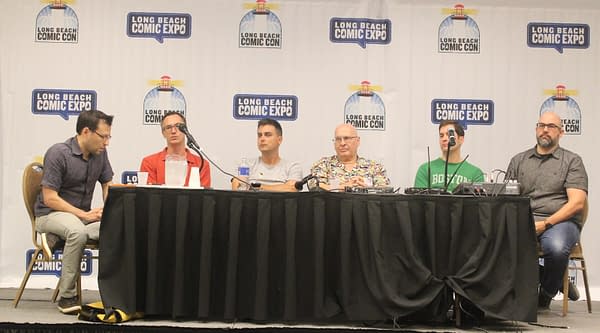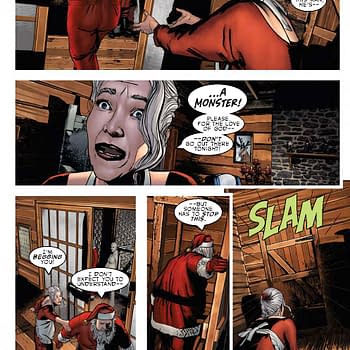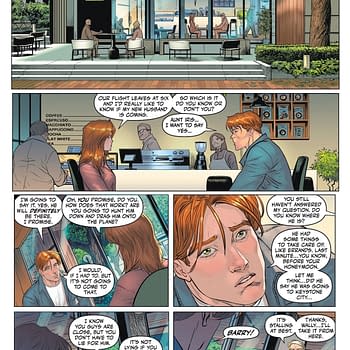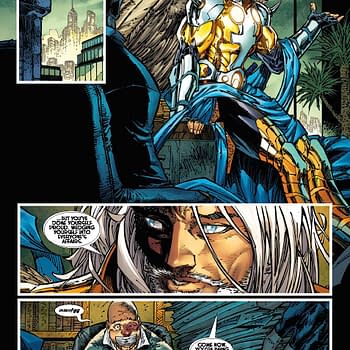Posted in: Comics | Tagged: Brendan Burch, Chris Hamilton, Comics, Courtney Sanford, Craig Miller, entertainment, Long Beach Comic Con 2015, Mike Blum, Stephen Leonard
LBCC 2015 – Experts Discuss Ins and Outs of Animated Web Comics
By Michele Brittany, West Coast Correspondent
YouTube has become a popular outlet for companies, large and small, and creative individuals to share original content with media consumers on a variety of platforms such as computers and mobile devices. It is a venue for creating new brands and finding new talent. Director, writer and producer Mike Blum (The Playback Singer, The Adventures of Baxter & McGuire, The Zit) introduced his five panelists to the Sunday, September 13 morning crowd at the Long Beach Comic Con. Blum's experts included Courtney Sanford (Producer of YouTube channel Spindo TV, Producer of "Tenkai Knights on Cartoon Network), Brendan Burch (CEO of Six Point Harness Studios, "Dick Figures The Movie"), Craig Miller (Writer/Producer/Publicist at Wolfmill Entertainment; Publicist/Director of Fan Relations for Lucasfilm), Stephen Leonard (Writer/Animator for Dreamworks, Freelance Animator/Writer for Giant Pancake Productions), and Chris Hamilton (President/Creative Director at Oddbot Inc.).

Blum then asked the panelist to discuss what challenges they faced in working with animated web comics. Burch said it was the shifting economics and especially the algorithm statistics that traditionally are not kind to animation content because cartoons are not an inherently engaging medium on the web. It is a challenge to keep costs down. Additionally, individuals have to be committed to working on content for a person of time in order to build community. A person cannot go into thinking that they will make one episode.
Miller expanded on Burch's last point. He stated that when producing a series, the team has to know ahead of time the length of the series for budgeting purposes. Hamilton explained that creating content to fill the order for the length of the commitment is a struggled. A person must be flexible to focus on where the needs occur. Leonard stated that making a series look good on a small budget was a difficulty always present in any project.
The constraint of time in which to tell the story was a challenging factor of web comics per Miller. And Sanford added that keeping upper management interested in a project long term was difficult because of the time it takes to turn a profit. In fact, Sanford told the audience that you are not going to make money on YouTube because it is hard to find a business model that will churn a profit in this line of business.
This led Blum into his next question: how did each panelist define success? Burch said it came down to having a long-term plan because it does "always come down to money" as the measuring stick for success. Securing other projects was a one success according to Miller, because typically a web series can become the springboard to projects that will make money. Burch added that one trick to success is starting with the smaller project and then adding pieces into something bigger – he called it the Frasier Model. Leonard said that when people want more of your content that was success. And, Hamilton added that positive fan response could put the "wind in your sails" and create a feeling of success.
Since money is a factor of success, Blue asked how can an individual or a small independent company get noticed and garner interest in their content? According to Burch, it still does require that a bigger company take an interest in the individual or company because the big company can drive audience to the content. Miller provided the example that Mondo will put a web comic they are interested in on a existing channel, watching for how well it does. If it does well, Mondo may move the series to its own channel.
Sanford expressed how important it was to develop partnerships amongst individuals. Partnerships could be built to compliment each other's strengths and minimize weaknesses. He added that YouTube encourages collaboration between other YouTubers. Blum added that since there is so much content out there that doing it alone is very hard.
Blum asked each panelist to tell the audience what they are looking in pitches. Sanford started this round by stating that his company was looking for entertainment, however at the end of the day, he was looking for the web series that could promote his toys to the target demographics of 6 to 11 year old children that were "toy addicts." And, he did not want pitches that featured rejected show material; he wanted pitches for 3-minute shows.
Burch said his intended audience was older so he put into practice his Frasier Model of business by starting small with his long-term goals solidified. Hamilton wanted humorous character driven stories that "had heart" and had the potential for longevity. Miller, as a writer-for-hire, expressed that stories to market toys was tricky; they needed to be stories in which the toy could be integrated seamlessly. For example, through the course of the story, a character would play or use the toy. In other words, the story was not sacrificed for the sake of selling the toy.
The last question of the hour was about how to make a project look good on a shoe-string budget. Hamilton advised to be smart with resources and to spend the money economically. He said one way to do that was by using strong character poses over deep detail. Leonard agreed: he said to economize the details and yet keep the stylized aesthetics. Burch advocated to "design in reverse" while Sanford stated that it was important to understand the economy of scale and for him, he had a person that understood production very well and kept them focused and on task. As the panelists stressed throughout the hour, Miller closed the panel by directing that the creator(s) had to be aware of their budget. "Create to it" and be budget-wise from the very beginning of the project.
Panel photos courtesy of Michele Brittany
Michele Brittany is an independent popular culture scholar and semi-professional photographer and editor of James Bond and Popular Culture: Essays on the Influence of the Fictional Superspy (McFarland & Company) as well as the forthcoming book Essays on Space Horror in Films, 1950s – 2000s. Read her reviews and analysis on the spy/espionage and space horror genres via her blogs at Spyfi & Superspies and Space Horror Films. Follow Michele on Twitter: @mcbrittany2014.














